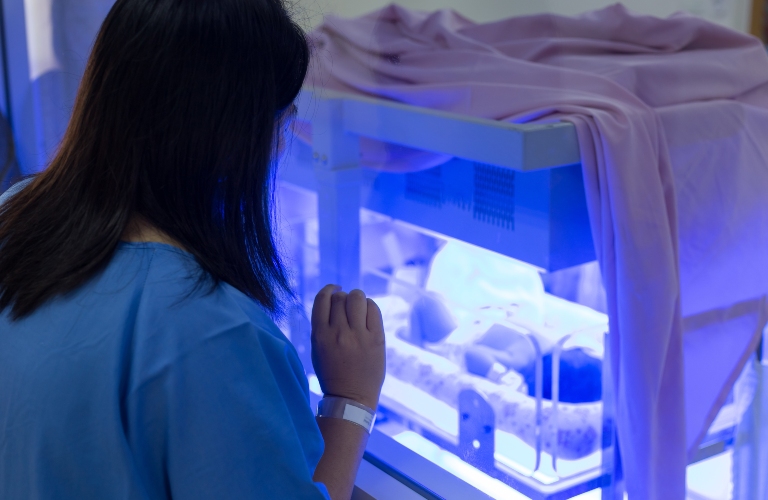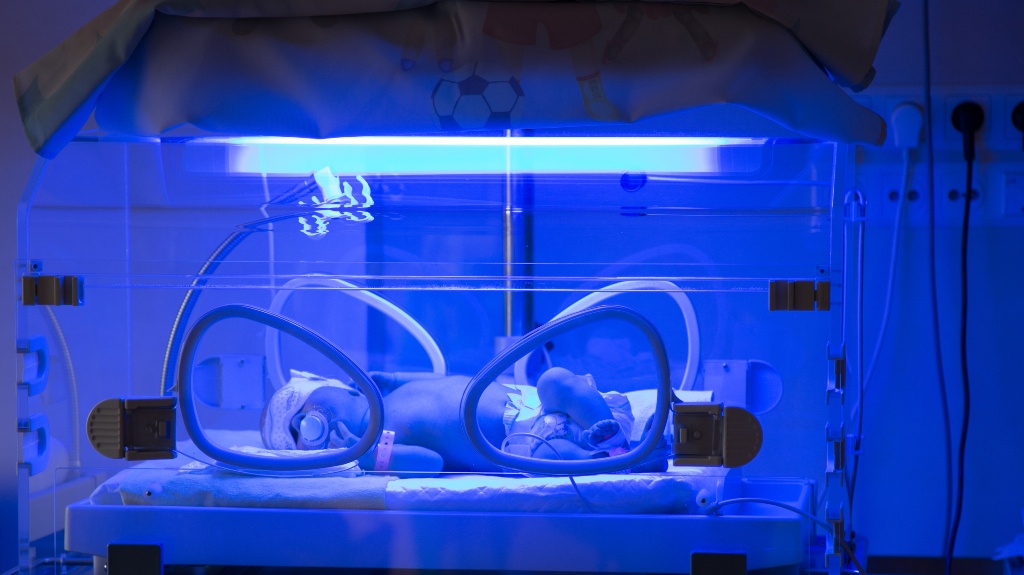Jaundice is one of the most common conditions affecting newborns—but that doesn’t mean it should be taken lightly. While usually treatable, delayed care can turn a manageable issue into a life-altering injury. The key to prevention? Phototherapy—a safe, science-backed treatment that uses light to protect the brain from bilirubin buildup.
This article breaks down what phototherapy is, when it’s needed, and why failing to act in time can have serious medical and legal consequences.
What Is Jaundice in Newborns?
Jaundice is the yellowing of a newborn’s skin or eyes caused by a buildup of bilirubin, a pigment produced when the body breaks down red blood cells. Most newborns experience mild jaundice, especially if they’re born early, because their livers aren’t yet mature enough to remove bilirubin efficiently.
In most cases, jaundice fades on its own or with a little help. But if bilirubin levels get too high, the risks increase—and fast.
How Phototherapy Works
Phototherapy is a non-invasive, proven treatment that uses blue-spectrum light to break down bilirubin so the baby’s body can eliminate it. Babies are typically placed under light lamps or wrapped in a special light-emitting blanket, with eye protection and minimal clothing to maximize effectiveness.
Treatment usually lasts a few hours to a few days, depending on how high the bilirubin levels are and how quickly the baby responds.
When Is Phototherapy Needed?
Doctors rely on bilirubin measurements and risk factors to decide when phototherapy should begin. These factors include:
- Premature birth
- Blood type incompatibilities
- Significant bruising at birth
- A sibling who had jaundice
- Signs of blood-related conditions
Tools like the Bhutani nomogram help pediatricians assess risk and make timely decisions. But if the warning signs are missed—or if care is delayed—the results can be devastating.
The Dangers of Delayed Treatment
When phototherapy is withheld or delayed, bilirubin levels can rise to dangerous levels. Left untreated, severe jaundice may lead to a rare but serious condition called kernicterus—a form of brain damage that is 100% preventable with timely care.

Kernicterus can result in:
- Cerebral palsy
- Hearing loss
- Eye movement problems
- Developmental delays
- Motor control disorders
These are not short-term concerns. These are lifelong consequences.
Legal Accountability for Missed Care
Hospitals and providers are expected to monitor newborns closely and treat jaundice without delay. If bilirubin levels weren’t properly tracked, or if phototherapy was not started in time, families may have grounds for a medical malpractice case.
Legal investigations typically focus on:
- Whether bilirubin testing followed standard guidelines
- If phototherapy was recommended and administered properly
- Discharge timing and follow-up instructions
- Documentation of parental education about jaundice warning signs
Final Thoughts
Phototherapy is a modern medical success story—it’s safe, effective, and has saved thousands of children from unnecessary harm. But its power depends on timing. When healthcare professionals fail to act quickly, the consequences can be severe—and avoidable.
At Latona Law, we understand the deep pain and uncertainty that follow preventable birth injuries. If your child was harmed due to delayed jaundice treatment, we’re here to help you understand your legal options and fight for the care and support your family deserves.

